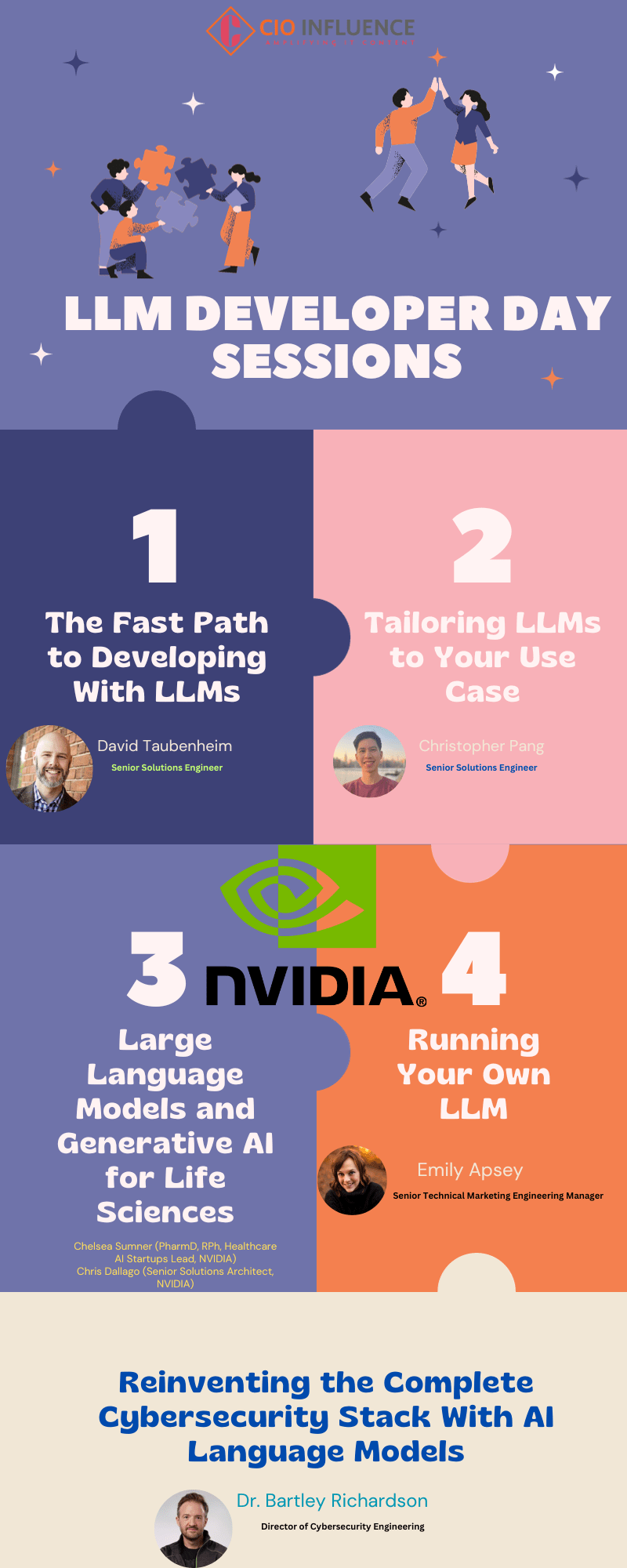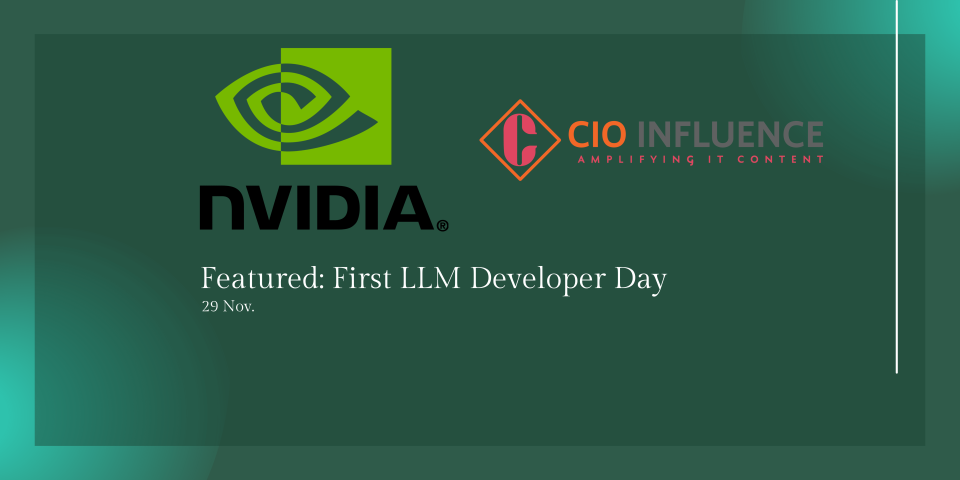NVIDIA is conducting a live Q&S session with AI experts on 29 November (10:30 AM SGT), as part of the first LLM Developer Day virtual-only event. All participants will get an opportunity to ask the experts about the key techniques used for creating, deploying, managing, and training Large Language Models or LLMs.
Maintaining its leadership position in AI and Machine Learning technology innovations, NVIDIA is organizing the first LLM Developer Day this week. Hosted by The NVIDIA Deep Learning Institute, the virtual-only event will be dedicated to the AI DevOps community. Through this event, NVIDIA plans to provide hands-on guidance and training kits to AI DevOps professionals. Once completed, participants would have a better picture of what LLM development and deployment look like in different technology domains. AI-powered applications for APIs, self-managed LLMs, and Retrieval Augmented Generation will be deeply discussed.
Large language models (LLMs) have been part of the search algorithms for years. But, last year, LLMs became a staple topic for AI engineers and data scientists — thanks to the launch of ChatGPT3. The world suddenly woke up to the infinite possibilities of using GPT-like LLMs for different applications. Since then, we have been introduced to different families of LLMs such as GPTs and BERTs.
 LLMs are part of the larger set of generative AI ecosystems called Foundation Models. As per Accenture, LLMs are both generative AI as well as a type of foundation model. Gen AI is the pinnacle of all AI Machine Learning innovations. It is miles ahead of the deep learning techniques for machine-based image generation, content creation, voice and speech synthesis, spatial analysis, and augmented intelligence. Generative AI, as applied to coding and programming, enables human engineers to use Co-Pilots for different DevOps purposes. The LLM Developer Day will specifically identify the different use cases of Gen AI and LLMs in DevOps.
LLMs are part of the larger set of generative AI ecosystems called Foundation Models. As per Accenture, LLMs are both generative AI as well as a type of foundation model. Gen AI is the pinnacle of all AI Machine Learning innovations. It is miles ahead of the deep learning techniques for machine-based image generation, content creation, voice and speech synthesis, spatial analysis, and augmented intelligence. Generative AI, as applied to coding and programming, enables human engineers to use Co-Pilots for different DevOps purposes. The LLM Developer Day will specifically identify the different use cases of Gen AI and LLMs in DevOps.
Why is generative AI so important?
40% of total working hours across industries can be impacted by LLMs. 65% of the total worked time has the potential to be fully automated or augmented by LLMs. (Accenture’s “A new era of generative AI for everyone” report)
If you are new to the whole Gen AI technology, this event will introduce you to the core concepts.
Here’s a six-step process to getting started with Gen AI and LLMs.
- Identify the Problem where Gen AI can be usefully deployed
- Data Preparation
- Choosing the best-in-class Generative AI LLM for training different types of data (Open AI’s ChatGPT, Google’s BARD, HuggingFace’s Transformers, and NVIDIA NeMo Large Language Model Service and the NVIDIA BioNeMo LLM Service, Cohere, Falcon, Lamda, and others)
- Create a framework for data privacy, security, and ethics
- Deploy the AI model in a production-ready environment
- Test the model for existing applications with integration and launch capabilities
Here are the key highlights of the event that would focus entirely on Generative AI techniques for DevOps.
- The Fast Path to Developing with LLMs for deploying LLM-powered systems using popular APIs.
- Tailoring LLMs to Your Use Case for customizing AI models for domain-specific applications.
- Running Your Own LLM to leverage open, commercially licensed LLMs running on commonly available hardware and optimizers.
- Live Q&A with AI Experts
Experts at The LLM Developer Day would discuss focused tracks for Life Sciences and Cyber Security.
At CIO Influence, we have identified fifteen questions that could be asked during the live Q&A with experts at the LLM Developer Day event.
- How has the definition of LLM changed in the post-GPT era?
- What kind of services does NVIDIA offer to AI DevOps teams?
- Can you give a complete overview of LLM production for specific industries: banking and finance, IT security, software development, and space technology?
- How much time does it take to fully develop LLMs?
- What are the key components in Gen AI architecture?
- What kind of DevOps infrastructure should an AI company have to build an LLMs-as-a-service offering?
- How do IT costs impact proprietary LLM development?
- Is Generative AI technology safe to use in today’s sensitive cybersecurity scenario?
- What role do CIOs and CISOs play in reinventing the cybersecurity stacks using LLMs?
- Which industries are leading in the deployment and use of AI-enabled cybersecurity solutions?
- What kind of budget should an AI company have to build LLM for the life sciences industry?
- Please tell us more about NVIDIA’s LLM Training Paths.
- What does an LLM organization look like?
- What skills should LLM builders have to supercharge development in 2024?
- Top tools and technologies for enterprise testing and deployment:


